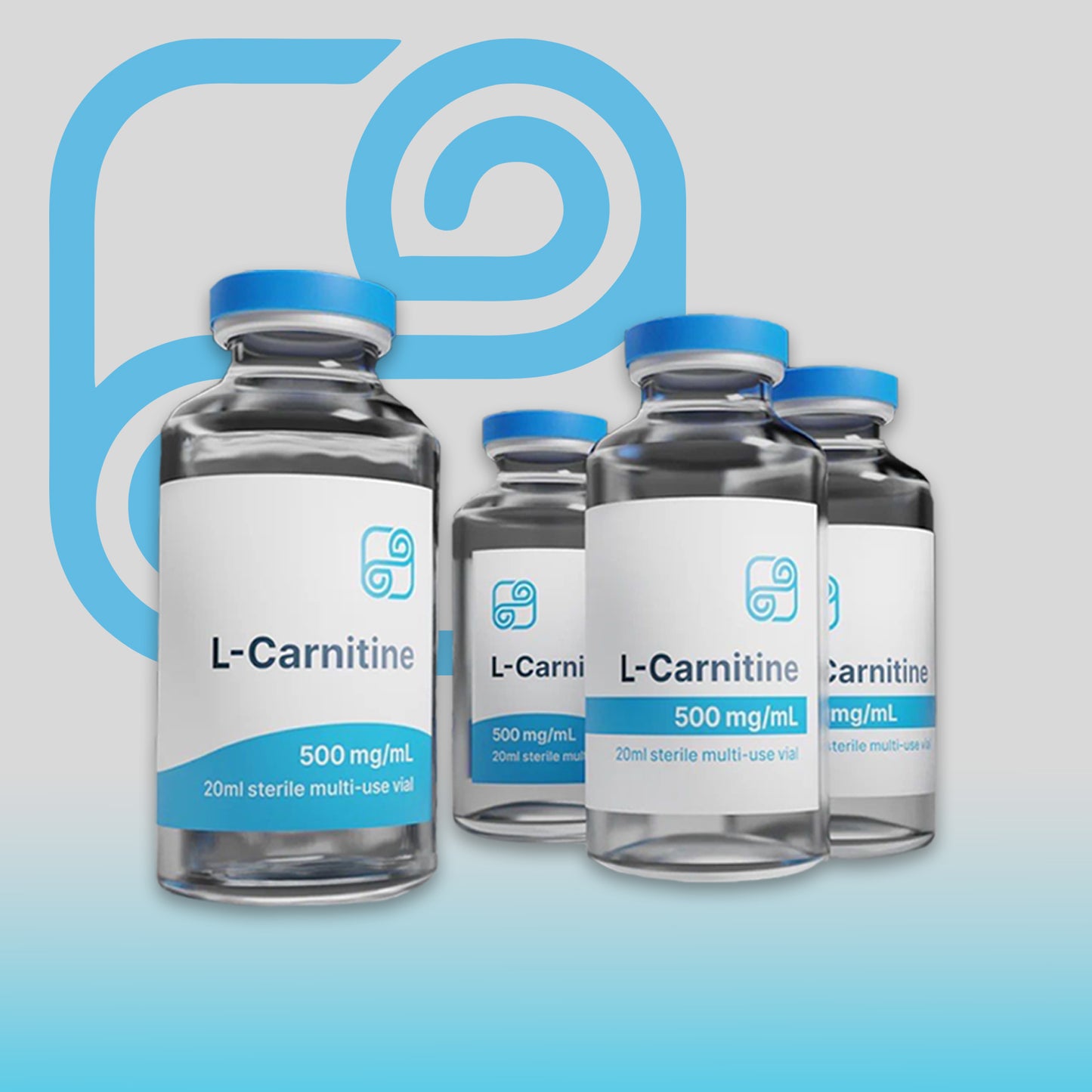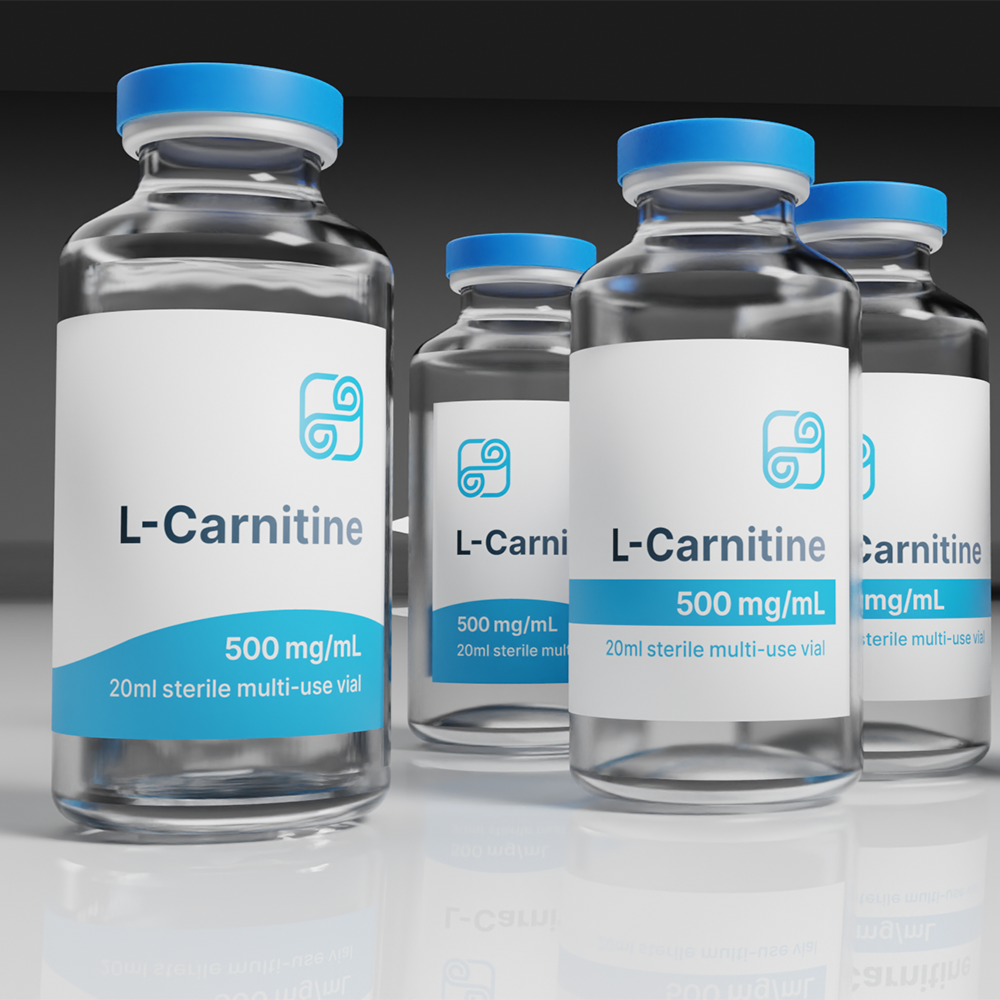My Store
L - Carnitine 500mg/ml - 20ml
L - Carnitine 500mg/ml - 20ml
Couldn't load pickup availability


This product is not intended for human consumption! Sold for collectible or research purposes only!
Advantages:
Studies show that the rate of fat burning is proportional to L-carnitine intake, which means that L-carnitine supplementation can contribute to increased fat metabolism and energy levels. L-carnitine injections allow the amino acid to go directly into the bloodstream and improve lipid metabolism faster than oral supplements, as the bioavailability of oral supplements is only 10-14%. In addition, oral supplements increase the risk that L-carnitine is converted in the microbiome to the metabolite TMAO, which is associated with cardiovascular disease.
Here are some of the most important beneficial effects associated with L-carnitine administration:
- Supports β-oxidation of fatty acids
- Accelerates the fat burning process
- It stabilizes the blood sugar level and eliminates the craving for carbohydrates
- Increases energy levels and reduces fatigue
- Improves muscle mass and physical performance
- Increases endurance and sports performance
- Supports faster muscle regeneration by increasing the content of androgen receptors
- Improves mental health and cognitive functions
- Contributes to the treatment of cardiovascular diseases
Share




